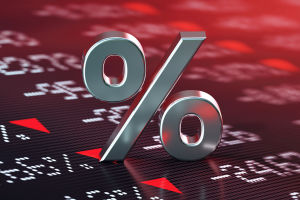Lykkers everywhere are witnessing rapid changes in how money is spent today. Gone are the days when cash reigned supreme.
Instead, a surge in digital payments has transformed spending into a nearly frictionless experience, masking the true cost of items being purchased.
This seamless interaction has made it easier than ever to spend, but at what price?
Frictionless Transactions
The convenience of electronic payments is undeniable. With just a tap of a phone or a click of a button, transactions are completed without any physical interaction. From ordering a pizza through a food delivery app to shopping on e-commerce platforms, the pain associated with spending money is all but erased. As a result, many consumers don't even flinch when they rack up hefty bills on their accounts.
Spending Statistics
In December 2023, consumer spending surged to nearly $19 trillion, rising 6% from the previous year and 29% since early 2020. This rapid growth contrasts sharply with economists' warnings about unsustainable spending driven by high inflation and increasing interest rates. Yet, despite these pressures, spending continues to remain strong.
The Pandemic Effect
The events of the pandemic catalyzed a fundamental shift in consumer behavior. Many took the opportunity during lockdown to save money, stashing away funds for future expenditures. Post-pandemic, this pent-up demand has fueled an increased enthusiasm for spending, particularly on experiences and services that were previously restricted.
Government stimulus payments and the deferral of student loan obligations provided additional financial elbow room, further contributing to the spending frenzy.
Financial Technology's Role
The rise of financial technology (fintech) has made payment processes tremendously smooth, allowing consumers to spend with ease. Michelle Weaver, a thematic strategist at Morgan Stanley, notes that consumers are willing to pay up to 5% more, on average, for convenience — and they will in many cases choose one product or service over another if it is more convenient.
Studies reveal that as digital payment options have become more commonly accepted, consumer spending has increased dramatically.
Mobile Payment Trends
According to McKinsey's 2023 Digital Payments Consumer Survey, more than 90% of consumers reported using some form of digital payment over the past year, and 73% said they made an online payment via a web browser in that same period.
Popular platforms have become everyday essentials, with more than half of users now relying on digital wallets more often than traditional payment methods. This surge in mobile payments is transforming the way people manage their personal finances.
Rapid Spending Acceleration
The speed of mobile payments further exacerbates the issue. It typically takes just 29 seconds to make a mobile payment, while credit card transactions average around 40 seconds. Faster transactions mean consumers are less likely to pause and reconsider their purchases, resulting in a notable increase in spending behavior.
Debt Concerns
The ease with which people can now spend has significant consequences. Household debt reached a staggering $17.5 trillion by late 2023, reflecting an increase of $3.4 trillion since 2019. Credit card debt has also skyrocketed, with balances surpassing $1 trillion—marking a 13% year-over-year jump. These figures highlight the urgent need for consumers to be vigilant about their spending practices.
Managing Finances Effectively
To combat the dangers of overspending through frictionless payment options, financial experts recommend practical strategies. For instance, not saving payment information in apps can prevent impulse purchases. Setting transaction notifications can help maintain awareness of spending as well. Tracking expenses through limited accounts also allows consumers to have clearer visibility over their finances.
Reflection and Action
Awareness is the first step toward addressing potential overspending. Reflecting on personal financial habits and implementing strategies such as creating a dedicated emergency fund or utilizing cash envelopes for budgeting can foster healthier spending practices.
Acknowledging the ease of digital transactions is essential, but being deliberate with finances helps maintain control and prevent slipping into debt. Managing debt is ultimately about finding a balance between enjoying the conveniences of modern spending while remaining committed to financial stability.


